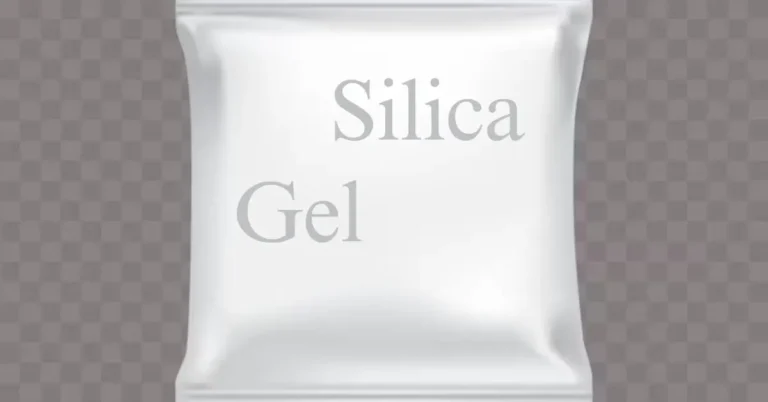Silica gel is a desiccant, a substance that helps control moisture and prevent damage caused by humidity. Often found in small packets inside packaging, silica gel has a variety of applications beyond simply keeping products dry. This article explores the chemistry, properties, and diverse uses of silica gel, shedding light on its critical role in various industries and everyday life.
Chemical Composition and Structure
Silica gel is composed primarily of silicon dioxide (SiO₂), a compound found in sand and quartz. The term “gel” refers to the amorphous, porous structure that silica gel exhibits. Unlike crystalline silicon dioxide, silica gel’s porous nature allows it to adsorb moisture effectively. Its structure can be visualized as a network of interconnected silicon and oxygen atoms, forming a rigid yet porous framework that can trap water molecules.
Manufacturing Process
The production of silica gel involves several key steps:
- Preparation of Silica: Silica is derived from silicon dioxide, which is extracted from sand or quartz. The silicon dioxide is treated with an alkaline solution, often sodium hydroxide, to create sodium silicate.
- Formation of Gel: The sodium silicate solution is then acidified, typically with sulfuric acid, to form silica gel. This process results in a gel-like substance that is washed and dried to remove impurities and excess chemicals.
- Drying and Activation: The wet silica gel is dried at high temperatures to activate its desiccant properties. This drying process removes water from the gel’s pores, making it highly effective at absorbing moisture when it is exposed to the environment.
- Pelletizing and Packaging: The dried silica gel is crushed into small beads or granules, which are then packaged into various forms for commercial use.
Properties of Silica Gel
Silica gel is known for its unique physical and chemical properties, which make it an effective desiccant:
- Porosity: Silica gel has a high surface area due to its porous structure, which allows it to adsorb a significant amount of moisture relative to its weight.
- Non-Toxicity: Unlike many chemical desiccants, silica gel is non-toxic and generally safe to handle. However, it is not edible and should be kept away from food products.
- Reusability: Silica gel can be regenerated and reused multiple times. By heating the gel to remove absorbed moisture, its desiccant properties are restored.
- Absorption Capacity: Silica gel can adsorb up to 40% of its weight in moisture, making it highly effective for controlling humidity in various environments.
Applications of Silica Gel
Silica gel’s ability to control moisture makes it valuable in numerous applications across different industries:
- Packaging: One of the most common uses of silica gel is in packaging. Small packets of silica gel are often included with products such as electronics, pharmaceuticals, and food items to prevent moisture damage and prolong shelf life.
- Industrial Uses: In industrial settings, silica gel is used to control humidity in equipment and machinery. It helps prevent rust and corrosion on metal parts and maintains the performance of sensitive instruments.
- Pharmaceuticals: The pharmaceutical industry uses silica gel to protect medications from moisture, ensuring their stability and efficacy. It is also used in the storage of vaccines and other temperature-sensitive products.
- Food Preservation: Silica gel packets are used in food packaging to maintain freshness and prevent spoilage. It helps keep products like dried fruits, snacks, and spices dry and free from clumping.
- Electronics: Silica gel is crucial for protecting electronic components from moisture-related damage. It is used in the packaging of devices like smartphones, computers, and cameras.
- Textiles: In the textile industry, silica gel is used to prevent mildew and moisture damage in fabrics and garments. It helps maintain the quality and appearance of textiles during storage and transport.
- Air Purification: Silica gel can be used in air purification systems to remove moisture and pollutants from the air. It helps maintain optimal air quality in various environments.
- Desiccant Breathers: Silica gel is used in desiccant breathers for machinery and equipment. These devices help control moisture levels in hydraulic systems and other critical components.
Environmental Impact and Recycling
While silica gel is a highly effective desiccant, its environmental impact is a consideration. Silica gel is non-toxic and does not pose a significant environmental risk when disposed of properly. However, the production and disposal of silica gel do require energy and resources.
Recycling silica gel is possible and involves regenerating the gel by heating it to remove absorbed moisture. Regenerated silica gel can be reused in various applications, reducing waste and the need for new production.
Challenges and Limitations
Despite its many advantages, silica gel does have some limitations:
- Limited Absorption Capacity: While silica gel is effective at adsorbing moisture, it has a finite capacity. Once saturated, it can no longer adsorb additional moisture until it is regenerated.
- Temperature Sensitivity: Silica gel’s performance can be affected by extreme temperatures. High temperatures can degrade the gel, reducing its effectiveness.
- Fragility: Silica gel beads are relatively fragile and can break or crumble under certain conditions. This can lead to the release of fine particles, which may be undesirable in some applications.
Safety and Handling
Silica gel is generally safe to handle, but there are a few safety considerations:
- Avoid Inhalation: Fine silica gel particles can be irritating if inhaled. It is advisable to handle silica gel in well-ventilated areas and avoid creating dust.
- Keep Away from Children and Pets: Although non-toxic, silica gel packets should be kept out of reach of children and pets to prevent accidental ingestion.
- Proper Disposal: Used silica gel should be disposed of according to local regulations. In many cases, it can be disposed of as regular waste or recycled.
Conclusion
Silica gel is a versatile and effective desiccant with a wide range of applications. Its unique properties, including high porosity and moisture absorption capacity, make it invaluable in industries ranging from packaging to pharmaceuticals. While silica gel is generally safe and environmentally friendly, it is important to handle and dispose of it properly to minimize any potential impact. As technology and industrial practices evolve, silica gel will continue to play a crucial role in moisture control and preservation across various sectors.

